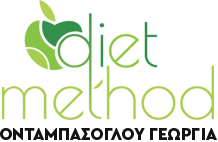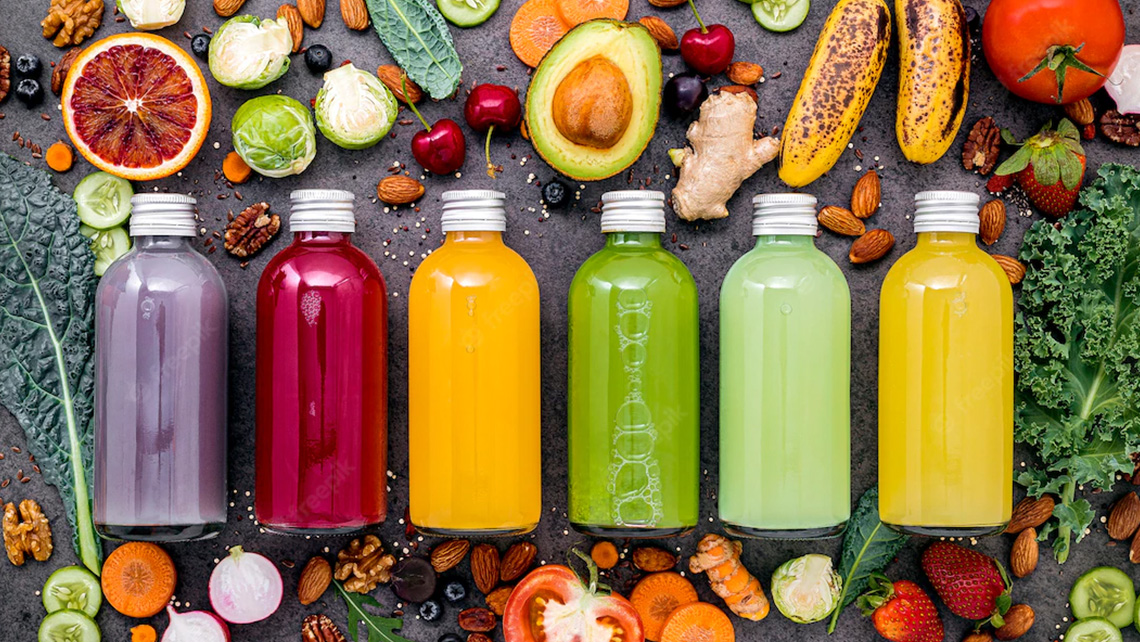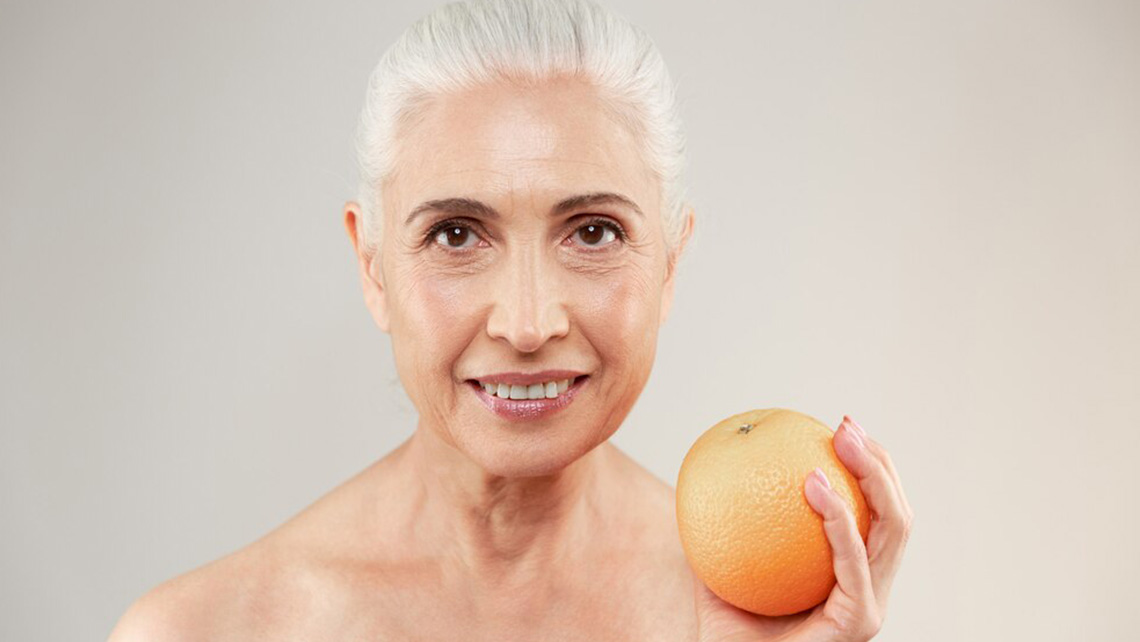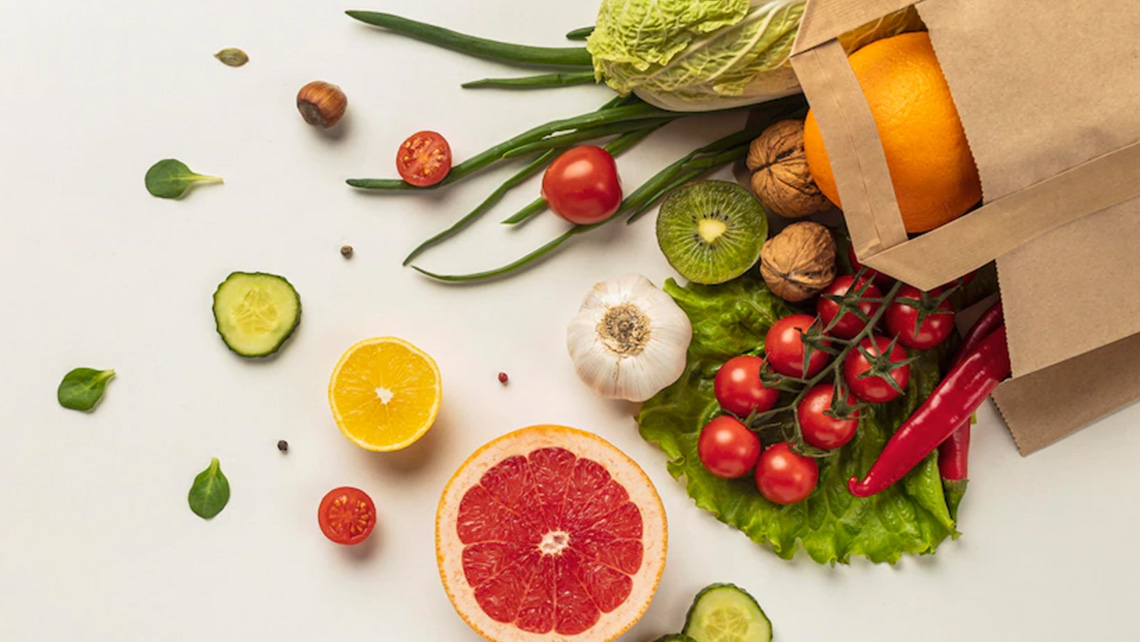Antioxidant substances such as carotenoids (β-carotene, lycopene, lutein), flavonoids (quercetin, catechins), coenzyme Q10 and antioxidant vitamins (mainly E, C) contribute to improving memory. In particular, they prevent the action of harmful free radicals that are created daily from various causes. Moreover, stress, which is more intense especially during exam periods, is a source of free radicals, preventing the body’s cells from performing their functions properly. Fruit and vegetable juices are a good choice of antioxidants (it is best to make them yourself with fresh fruit). However, the alternative of ready-made juices (juices enriched with vitamins, dietary fiber and other ingredients have recently been on the market) are a nutritious solution.
Reduce wrinkles through diet
A diet rich in vitamin C reduces the appearance of wrinkles and age-related dryness of the skin. In addition, the high intake of linoleic acid reduces the chances of appearing in addition to dryness, and thinning of the skin.
Eat citrus fruits, strawberries, cantaloupe, peppers, kiwi for vitamin C and green leafy vegetables, flaxseed and walnuts for linoleic acid.
Dietary tips to reduce cellulite
As we are in the middle of spring and have just said goodbye to another winter which for the most part found us sitting (in the office chair, on the couch, or at the computer), eating a little more fat, treats and sweets, but to endure the cold of course, so now we are starting to worry about the approaching summer and about the time when we will need to take off our pants and appear with our bikini in front of all eyes on the beach.
The main reason that makes our forehead sweat every year at this time is of course cellulite! Yes, that well-known aspect of the skin that makes it look textured, with large or small dimples, looking like an orange peel…
What is cellulite?
Cellulite is caused by an abnormal concentration of fat and water between the skin and subcutaneous tissue. In the areas of cellulite, the connective tissue loses its elasticity (collagen) and the skin presents an abnormal appearance with dimples and bumps resembling the so-called “orange peel”.
But how can we deal with it nutritionally?
- http://www.blogger.com/images/revitol-cellulite-solution.png Avoid fatty foods and fried foods.
- Avoid eating red meat (at most once a week and as lean as possible), as well as eating animal fats.
- Eat plenty of fresh fruits and vegetables.
- Avoid sauces, mayonnaise and sour cream.
- Limit the consumption of salt and sugar as much as possible.
- Avoid soft drinks and caffeine consumption (they are “protagonist drinks” that contribute to the appearance of cellulite).
- Limit frequent consumption of alcoholic beverages.
- If you smoke, limit smoking and if possible stop.
- Drink plenty of water with meals and throughout the day (at least 8 glasses of water per day).
- Avoid meals after 8 pm as much as possible.
- Get a good hormone checkup, consult your doctor and if possible avoid drugs that maximize fluid retention (eg contraceptives).
- Increase your physical activity (eg walk, take the stairs on foot, don’t use transport for short journeys).
Foods that help sleep
A large percentage of the population suffers from insomnia, while even more people (about 2/3 of the population) often complain of sleep disturbances. Almost all of us have gone through periods in which we wake up in our sleep, have difficulty getting up in the morning, feel sleepy throughout the day, etc. These disorders naturally affect our mood, concentration and overall performance at work, school or any other activity. According to the results of a recent study, sleep disturbances even for one night lead to a decrease in performance and ability to concentrate by about 30% the next day.
Nutrients such as carbohydrates, tryptophan, and B vitamins can help treat insomnia. Tryptophan appears to be perhaps the most important nutrient for the quality of our sleep, as it is converted in the body to serotonin, which is associated with relaxation of the nervous system and aids sleep. Foods that contain tryptophan, such as milk, but also foods that contain carbohydrates, which according to studies increase the levels of tryptophan in the blood, such as all starchy whole grain foods, help to deal with sleep disorders. Correspondingly, the vitamins of the B complex also participate in the relaxation of the nervous system, and indirectly help to improve the quality of sleep (prefer whole grain foods that contain a greater amount of B vitamins). Other foods that seem to contribute are green leafy vegetables, such as lettuce and spinach, but also herbs, such as dill or basil.
Tip 1: Do not eat large amounts at dinner, especially fatty foods.
Very large meals usually lead to stomach upsets associated with sleep disturbances and worsen insomnia symptoms.
Tip 2: Accordingly, you should not go to bed on an empty stomach, as it is more likely that you will “lose” your sleep. Hypoglycemia causes the secretion of hormones (in order to regulate blood glucose levels), which essentially stimulate the brain, making it difficult to fall asleep.
Aim for 5 a day
Eating fruits and vegetables definitely contributes to a healthier lifestyle according to proven scientific research and studies. To reap the benefits, it would be good to consume 5 servings of fruits and vegetables daily. And this in total, not 5 servings of fruit plus 5 servings of vegetables. One serving weighs about 80g, which corresponds to a medium-sized fruit, 1 cup of raw vegetables or ½ cup of cooked vegetables. There is a wide variety throughout the year to satisfy even the pickiest.
5 reasons why we should include 5 servings of fruits and vegetables in our daily diet are:
- They are rich in vitamins and trace elements.
- They help maintain a healthy weight.
- They are an excellent source of fiber and antioxidants.
- They reduce the risk of heart disease, stroke and some forms of cancer.
- They have a wonderful taste and a huge variety.
Below we list which vitamins and trace elements you can get from various fruits and vegetables:
Vitamin A: Pumpkin, sweet potato, mango, carrot
Vitamin B1: Beans, soy
Vitamin B2: Mushrooms, beets, greens, spinach, soy
Vitamin B3: Mushrooms, potato
Vitamin B6: Potato, beans, avocado, banana, watermelon
Vitamin C: Citrus fruits (orange, lemon, grapefruit), strawberries, kiwi, peppers, Brussels sprouts, tomato, broccoli, cauliflower
Vitamin E: Vegetable oils
Vitamin K: Brussels sprouts, broccoli, spinach, greens, cauliflower, lettuce, cabbage
Calcium: Greens, spinach
Iodine: Mushrooms, sunflower seed
Potassium: Beans, beets, greens, banana, cantaloupe, soybeans, zucchini, artichoke, tomato
Magnesium: Spinach, beans, broccoli, banana, watermelon
Iron: Spinach, beans, soybeans, cherries, apricots
Folic acid: Asparagus, spinach, lentils, black-eyed beans, lettuce, greens, broccoli, oranges, beets






